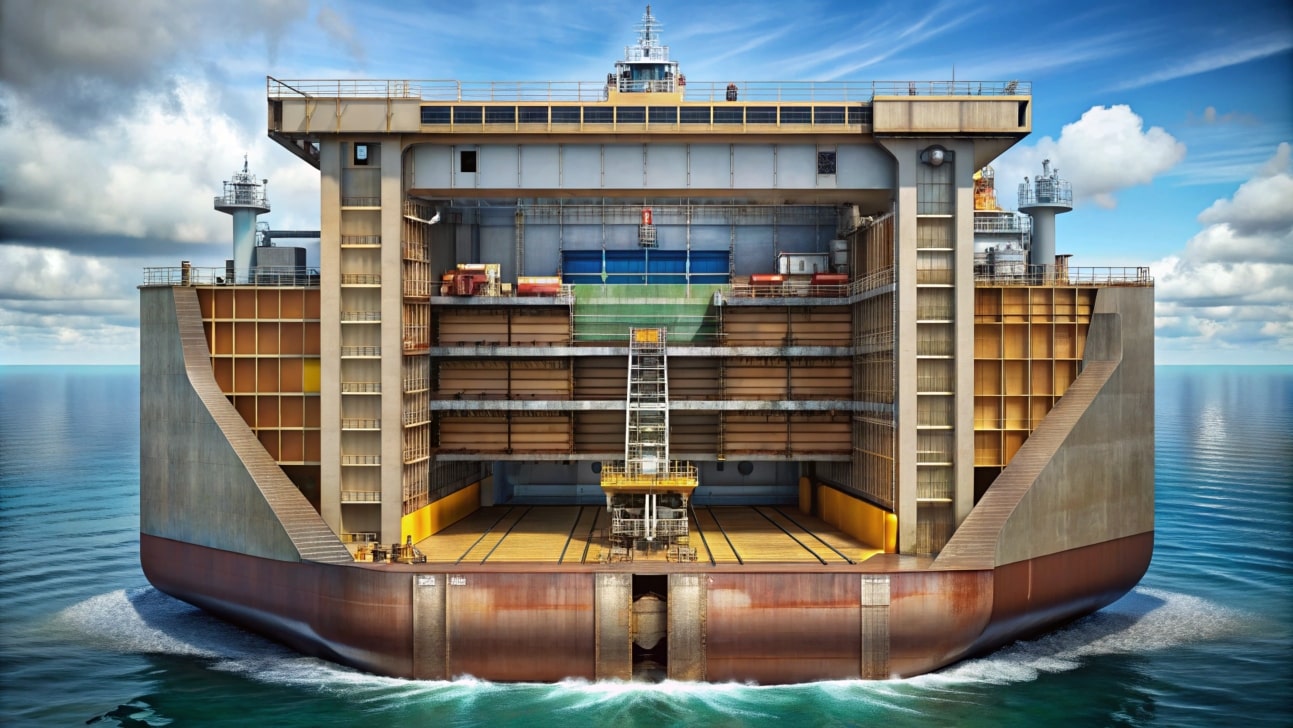Imagine being on a ship surrounded by vast oceans, relying on a vital component you might not even notice – the cofferdam. This unassuming structure plays a pivotal role in safeguarding the vessel and its surroundings, but have you ever truly understood its intricate design and functionality? Let’s explore how cofferdams on ships serve as silent protectors, ensuring maritime safety in ways you might not have considered.
Importance of Cofferdams on Ships
Cofferdams on ships play an essential role in ensuring the safety and integrity of the vessel’s structure. Safety regulations mandate the use of cofferdams to prevent water ingress into critical areas of the ship, protecting against potential hazards such as flooding. These structures act as a barrier between the external environment and sensitive components, helping to maintain a safe operating environment for the crew and cargo.
Additionally, cofferdams contribute to environmental protection by minimizing the risk of oil or chemical spills in case of a breach in the hull. Adhering to safety regulations regarding cofferdams is important for maritime operations, as failure to comply can result in catastrophic consequences.
The environmental impact of cofferdam failure can be severe, leading to pollution of marine ecosystems and endangering aquatic life. Properly designed and maintained cofferdams are essential in upholding the structural integrity of ships and ensuring compliance with safety standards to mitigate environmental risks.
Types of Cofferdams Used
To address the diverse needs of maritime operations, various types of cofferdams are utilized on ships to safeguard against potential hazards and guarantee operational safety.
Permanent cofferdams are built into the structure of the ship and provide long-term protection. These cofferdams are constructed using durable materials like steel or concrete to make certain they can withstand the harsh marine environment.
On the other hand, temporary cofferdams are often used for specific projects or maintenance tasks. They can be inflatable, flexible, or modular in design, allowing for easy installation and removal when needed. Temporary cofferdams are typically made from materials like rubber or fabric and are more versatile regarding application.
The choice between permanent and temporary cofferdams depends on the specific requirements of the ship and the nature of the operation. Understanding the differences between these two types of cofferdams is vital in guaranteeing effective risk management and operational efficiency on board.
Construction and Design of Cofferdams
Utilizing a combination of robust materials and meticulous engineering, the construction and design of cofferdams on ships play an essential role in safeguarding the structural integrity and safety of maritime vessels.
When constructing cofferdams, specific materials are vital to meet regulations and guarantee effectiveness. These materials include:
- Steel: Known for its strength and durability, steel is commonly used in cofferdam construction to withstand the harsh marine environment.
- Concrete: Offering excellent resistance to water pressure, concrete is often utilized in the design of cofferdams to provide stability and support.
- Rubber: Flexible and resilient, rubber is used as a sealing material in cofferdams to prevent water ingress and maintain a watertight seal.
Adherence to cofferdam regulations is imperative to assure the safety and efficiency of these structures.
Compliance with regulations guarantees that cofferdams are designed, built, and maintained to the highest standards, safeguarding ships and their crew from potential risks.
Functionality of Cofferdams at Sea
In maritime operations, the functionality of cofferdams at sea is essential for ensuring the structural integrity and safety of ships. Coffer dams act as barriers between different compartments on a vessel, preventing water ingress into sensitive areas such as machinery spaces or cargo holds. This separation is important for maintaining the buoyancy and stability of the ship, especially in case of a breach in the hull.
Coffer dams also play a significant role in water management onboard. By creating watertight compartments, they allow for better control and distribution of weight, helping to maintain the ship’s balance. Additionally, cofferdams can serve as protective layers against potential leaks or spills, safeguarding the environment from pollution risks.
To enhance cofferdam safety, regular inspections and maintenance are essential. Any signs of damage, corrosion, or wear must be promptly addressed to prevent potential failures.
Proper water management within cofferdams is vital for the overall safety and stability of the ship at sea.
Challenges and Maintenance of Cofferdams
Effectively maintaining cofferdams on ships presents a multitude of challenges that necessitate meticulous attention and proactive measures.
When it comes to installation challenges, ensuring the proper alignment and sealing of cofferdams can be complex due to the varying hull shapes and sizes of different vessels. Additionally, the structural integrity of cofferdams must be carefully monitored to withstand the harsh marine environment and potential impacts during operations.
Maintenance procedures for cofferdams are vital for their longevity and functionality. Regular inspections to detect any signs of corrosion or damage are essential to prevent leaks and maintain the watertight integrity of the cofferdam.
Moreover, cleaning and removing accumulated debris are necessary to avoid blockages that could impede the cofferdam’s performance.
Frequently Asked Questions
How Do Cofferdams Impact Ship Stability?
When analyzing ship stability, consider how cofferdam design impacts weight distribution. Evaluate the placement and size of cofferdams to guarantee ideal stability. Conduct thorough stability analysis to account for cofferdam effects on the vessel’s equilibrium.
Are Cofferdams Used in All Types of Ships?
In ships, cofferdams serve essential roles. They come in various types and find applications across different vessels. Understanding cofferdam types and their diverse functions is important for ensuring ship safety, integrity, and operational efficiency.
Can Cofferdams Prevent Environmental Pollution?
In cofferdam design for ships, using them can help prevent environmental pollution by creating a barrier between potential hazards and the surrounding environment, meeting stringent environmental regulations. Properly constructed cofferdams play an essential role in pollution prevention.
What Materials Are Used to Build Cofferdams?
When constructing cofferdams on ships, steel, concrete, and sometimes timber are used. These materials guarantee durability and water-tightness. Proper cofferdam maintenance is essential to uphold structural integrity and prevent water ingress during ship repairs or construction work.
Do Cofferdams Increase the Cost of Ship Construction?
When considering cofferdams on ships, it’s crucial to assess cost implications. While cofferdams may slightly increase construction costs, the enhanced safety and operational efficiency they offer often outweigh these expenses, making them a valuable investment.






